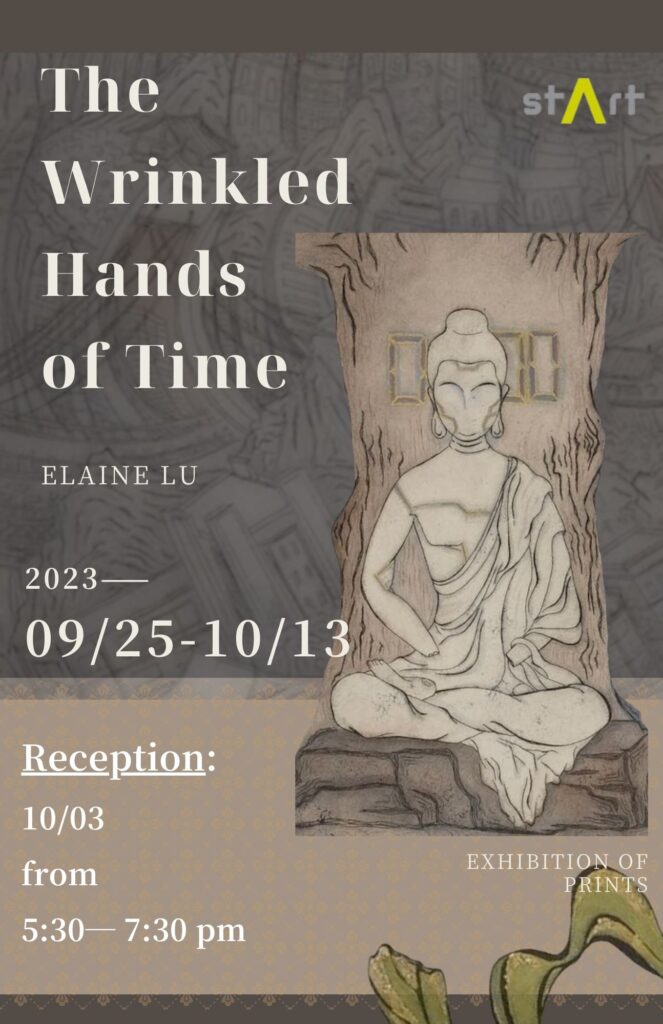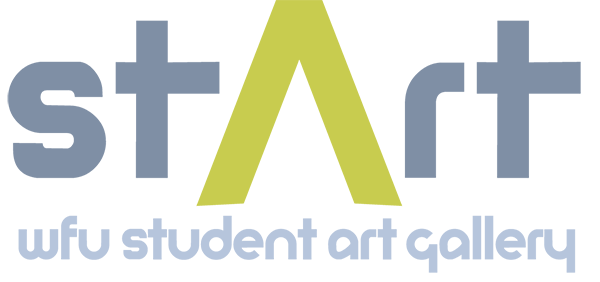The Wrinkled Hands of Time

The Wrinkled Hands of Time
Prints by Elaine Lu (’25)
SEPTEMBER 25 – OCTOBER 13 2023
stArt.rv (Reynolda Village)
While the inventions of writing and drawing allow ideas, emotions, and events to be recorded, the invention of printing facilitates the further spread of such concepts to a wider audience. For me, printmaking is a diary that captures my observations and ever-changing recognition of the physical world. As Adonis once wrote, our past experiences, emotions, and thoughts are “not a story, a human apple, a season, a specific place, or anything that can be historicized, but something has been taken by the wrinkled hands of time”. Smoothing out the wrinkles, we see the illuminated presence of these intangible existences hidden beneath.
If societal living is an ongoing ethnographic study, printmaking is the tangible recording taken during participant observations and ethnographic interviews. This ethnography is neither specific nor academic, but contains broad contents across time periods and cultures. Everything is recorded and stored in the organic memory within the prefrontal cortex and expressed using images from literature and music acquired, processed, and housed by the brain. The fragments of this acquired information make up the subjective expressions of my inner-self.
The way ancient monks created sculptures and painted frescos influenced my interpretation of lines and painted structures, while the words they wrote, and the principles they taught, influenced how I recognize the world and my inner-being. While various forms of art can be connected through common ethos and world views, different techniques can also be mixed and added with each other to cause 2D works to have 3D effects.
I first learned about printmaking as an artform four years ago, which then became an inseparable part of my life. Printmaking is both unique and carries the ability to create multiple originals. For example, “Journey to the West” is a series of multiples that takes advantage of pulling multiple impressions forming unique combinations. Unlike painting on canvas, in which 3D illusions are created through drawing light and shade effects. Printmaking allows the creator to print similar impressions from the same matrix and use them to build upon each other physically, creating the reality of 3D effects.
I seek the mysterious in art. To add mystery through color, I first pulled several prints from the same plate with different levels of darkness and cut out the rough shapes of specific parts. Then, I burned the edges of these layers and collaged them together in a sequential dark-to-light format. I used the darkest level of the ink to create natural shadows. The more layers that I build, the more sculpture-like effects evolve. The burned edges have a similar texture to frescos painted inside a cave. As with the artifacts people excavate from archeological sites–the intangible existences hidden in the river of time, become apparent.
While the same work can be reproduced as much as the creator wants, every proof may have different and unique effects that are not duplicable. It is an amicable art form, always providing plan B for artists–opportunities to print a new one or record the progress–but it is also a cruel art form–once one fails a step, there is barely any makeup other than to start over. In the process of making prints, I discover their uniqueness and reproducibility. The mark-making process urges me to take caution while carving my plates. The proofs allow me to experiment with multiple prints and mix them with other media to create new effects. This process records the time I live. Adonis once wrote: “Time is the clothes which we once put on, that we cannot take off”.
Reception
Tuesday, October 3rd from 5:30-7:30pm

